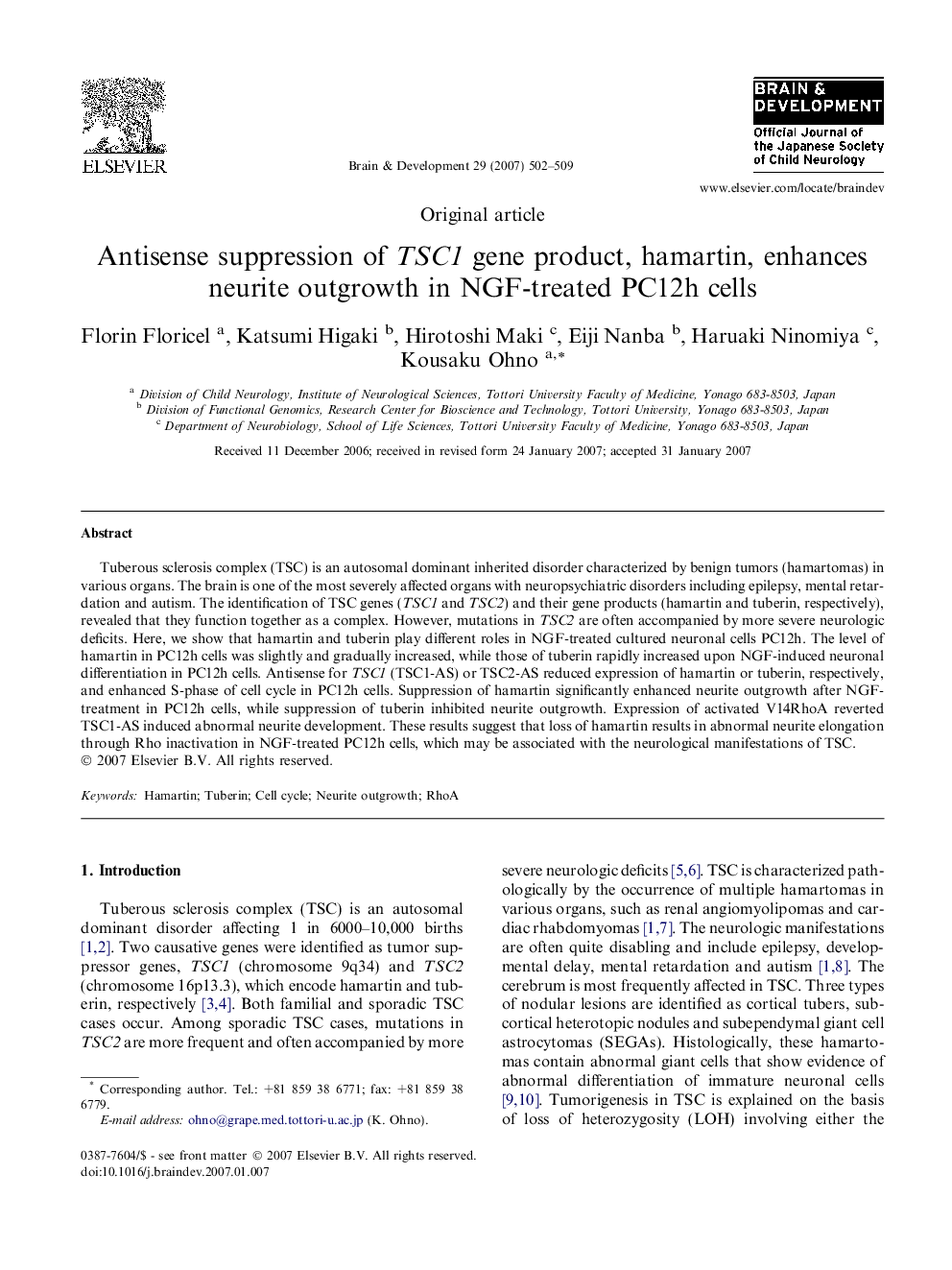| Article ID | Journal | Published Year | Pages | File Type |
|---|---|---|---|---|
| 3038347 | Brain and Development | 2007 | 8 Pages |
Tuberous sclerosis complex (TSC) is an autosomal dominant inherited disorder characterized by benign tumors (hamartomas) in various organs. The brain is one of the most severely affected organs with neuropsychiatric disorders including epilepsy, mental retardation and autism. The identification of TSC genes (TSC1 and TSC2) and their gene products (hamartin and tuberin, respectively), revealed that they function together as a complex. However, mutations in TSC2 are often accompanied by more severe neurologic deficits. Here, we show that hamartin and tuberin play different roles in NGF-treated cultured neuronal cells PC12h. The level of hamartin in PC12h cells was slightly and gradually increased, while those of tuberin rapidly increased upon NGF-induced neuronal differentiation in PC12h cells. Antisense for TSC1 (TSC1-AS) or TSC2-AS reduced expression of hamartin or tuberin, respectively, and enhanced S-phase of cell cycle in PC12h cells. Suppression of hamartin significantly enhanced neurite outgrowth after NGF-treatment in PC12h cells, while suppression of tuberin inhibited neurite outgrowth. Expression of activated V14RhoA reverted TSC1-AS induced abnormal neurite development. These results suggest that loss of hamartin results in abnormal neurite elongation through Rho inactivation in NGF-treated PC12h cells, which may be associated with the neurological manifestations of TSC.
